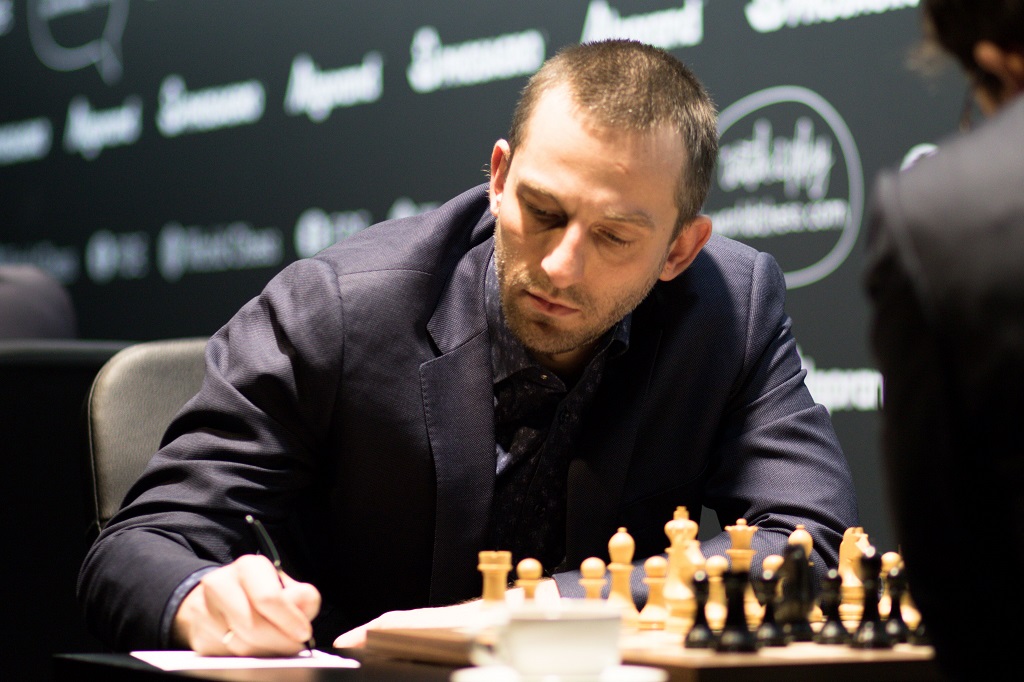


 The third leg of the FIDE Grand Prix is being played in Hamburg, Germany. The 16-player knockout has a €130,000 prize fund, with the series as a whole having an additional prize fund of €280,000 plus two qualifying spots for the 2020 Candidates Tournament. The tournament takes place in the Kehrwieder Haus from November 5th to 17th. You can find more info here.
The third leg of the FIDE Grand Prix is being played in Hamburg, Germany. The 16-player knockout has a €130,000 prize fund, with the series as a whole having an additional prize fund of €280,000 plus two qualifying spots for the 2020 Candidates Tournament. The tournament takes place in the Kehrwieder Haus from November 5th to 17th. You can find more info here.
The key match-up in the race to get one of the Candidates spots in Hamburg ended up favouring Alexander Grischuk. During the previous leg in Riga, the Russian had lost against Maxime Vachier-Lagrave in the semi-finals, but now he was the one knocking out the French to reach the final.
Grischuk is one of six players that are playing their third and last tournament of the Grand Prix series. Depending on his result in the final, he will end up with anything in the range of 17 to 21 points in the overall standings table. Vachier-Lagrave (13 points), Shakhriyar Mamedyarov (10) and Ian Nepomniachtchi (9) will all be playing in Jerusalem. A perfect run at a GP event gives the winner 12 points, in which case the maximum amount of points the runner-up can get is 8. Thus the relevance of Grischuk's win over 'MVL' — beating a direct rival left him with very good odds to finish in the top two.
Click or tap any result to open the game via Live.ChessBase.com
With the white pieces, Grischuk decided to avoid a highly theoretical battle, a decision that worked out well against one of the strongest Najdorf/Grünfeld experts. Perhaps noticing that he was not getting much of the opening, Vachier-Lagrave gave up the bishop pair on move 17, giving his rival a small but important strategical edge. A little later, Grischuk made a critical pawn push:
Engines do not think Grischuk's 21.h5 is the very best alternative, but this human move had a strong impact during the ending that would eventually ensue in the game. When all that was left on the board were queens, a white bishop, a black knight and four pawns per side, Black had nothing better than to fracture his structure:
After 37...g5 38.hxg6 ♚xg6, the isolated h-pawn became a new target for White.
When Grischuk attacked Black's f7-pawn with his queen and bishop, Vachier-Lagrave decided to swap the queens and go into a pure knight v bishop endgame. Grischuk transferred his king to h5, which meant Black needed to keep his monarch on g7, passively defending the h-pawn, while his knight was alone stopping the a-pawn from advancing on the other flank. It was high time for White to use some zugzwang manoeuvres in order to make progress:
Grischuk had patiently reached this setup by moving his bishop along the f1-a6 diagonal, while Black had less flexibility with his knight. Now after 50...d4 White can start thinking about using his king to attack the d-pawn. Grischuk continued to calmly manoeuvre his bishop until getting the all-important 63-move win.
Vachier-Lagrave won both prior rounds without needing tiebreaks | Photo: Nadja Wittmann
Given Dubov's track record in the last couple of tournaments, it was slightly surprising to see him going for a line in which White gets a small edge after a queen trade that came as early as move 12. Dubov explained:
Maybe White is not better, but it's probably time to play a game that would consist of more than twelve moves or something. [...] I have to admit that Jan-Krzysztof probably defended reasonably well — even now, I don't see a point where I could win by force or anything.
The players will return to the Theater Kehrwieder on Wednesday, when a series of rapid games will decide who will be facing Grischuk in the final.

Daniil Dubov on his way to the playing hall | Photo: Valeria Gordienko
Commentary by GM Evgeny Miroshnichenko
| Nov. 5–7 | Round 1 + Tie-breaks |
| Nov. 8–10 | Round 2 + Tie-breaks |
| Nov. 11-13 | Semi-final + Tie-breaks |
| Nov. 14 | Rest day |
| Nov. 15-17 | Final + Tie-breaks |